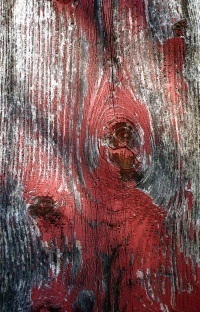Best Way to Restore Redwood Panelling
Updated: 2022-01-17
By Bill & Kevin Burnett
Inman News
Q: We have a 1920s dining room that has redwood siding. It is all-natural but is showing its age. We would like to enhance the wood and would like to know what you would recommend to put on it. It does have scratches that need to be treated as well.
A: Thanks for sending some photos along with your question. From them, we see that your paneling has some kind of clear finish. This leads us to suggest a direction you might take.
Inman News
Q: We have a 1920s dining room that has redwood siding. It is all-natural but is showing its age. We would like to enhance the wood and would like to know what you would recommend to put on it. It does have scratches that need to be treated as well.
A: Thanks for sending some photos along with your question. From them, we see that your paneling has some kind of clear finish. This leads us to suggest a direction you might take.

Your 1920s dining room truly is a classic. The full redwood paneling with redwood battens at the seams, capped with a plate rail, is a handsome example of the Craftsman-style architecture prevalent in the 1920s. The paneling looks to be in pretty good shape. It just needs a little freshening up. You're fortunate that it has never been painted. This makes the restoration job a whole lot easier.
There are a couple of ways to tackle this project. The first is more time consuming, messy and labor intensive than the second.
The first option is to strip the paneling of its finish with a chemical stripper, sand the wood smooth and apply a new finish. With care, this will make the wood look as good as the day the first occupants of the house moved in.
Sanding will remove the surface layer of wood fibers and bring out the virgin wood beneath. Since redwood is such a soft wood, scratches, if not too deep, can easily be sanded out to leave a smooth surface. You'll also have a wide choice of finishes.
Make no mistake -- this is a lot of work, as Bill will readily attest. In the early '90s, he restored a Craftsman bungalow in Alameda, Calif. Even with the help of our mother, Lois, it took nearly two weeks to strip, sand and refinish the redwood paneling in the smallish dining room.
You'll need to protect the floor with plastic sheets during the stripping process and make sure that the room is well ventilated when you're working. It would also be wise to install plastic sheeting over the interior door openings to contain the sanding dust in the work area.
Finally, depending on how much time you have to give such a project, be prepared to be without your dining room for weeks. After enduring the clutter, fumes and grit, the result will be spectacular. The question will be, "Is it worth it?"
Bill thought so at the time. Nowadays, we would approach this job differently. Because the paneling appears to be in good shape, we'd opt for a second choice -- cleaning, sanding and refinishing. The result will not be as pristine as stripping, but it'll look pretty darn good, and we think the time and effort saved outweighs the difference in the result.
The first step is to clean the paneling. No matter how fastidious a housekeeper one is, over the years dirt and grime build up on walls. Give the paneling a good cleaning with a solution of tri-sodium phosphate (TSP). TSP will not only clean the surface but will dull the gloss of the existing finish. In a 2-gallon bucket, mix the TSP with warm water according to package directions.
Using a soft cloth, thoroughly wash all of the wood, paying particular attention to the corners formed when two pieces of paneling or trim come together. Do not saturate the paneling and make sure to rinse all of the residue off with clean water. TSP is mildly caustic so wear rubber gloves and keep the solution from coming into contact with your skin.
After the wood dries, lightly sand the area with 150-grit sandpaper. More aggressive sanding might be required for scratches, but do not try to remove them. Instead, soften the edges by feathering them out into the surrounding area.
With this preparation, the finish you apply will make all but the deepest scratches disappear.
If you have gouges in the wood, it may be necessary to fill them. Plastic wood putty is available in a variety of colors at any hardware store. Sand the gouge, fill the hole with putty and let dry. Once dry, sand the repair smooth. Putty tends to shrink so it may take a couple of applications to complete the repair.
Thoroughly vacuum and tack the surface of the paneling so that no dust gets in the finish. A quick wipe-down with mineral spirits or lacquer thinner will also help prepare the surface.
Once this preparation is completed, apply a clear finish. For redwood, we like to use a clear polyurethane coating for ease of cleaning, durability and looks. Although polyurethane tends to darken with age, this should have little effect because of the deep tones of the redwood.
Two coats of polyurethane in the sheen of your choice -- sanding and tacking between coats -- will give your paneling new life for decades to come.
Comments (0)
